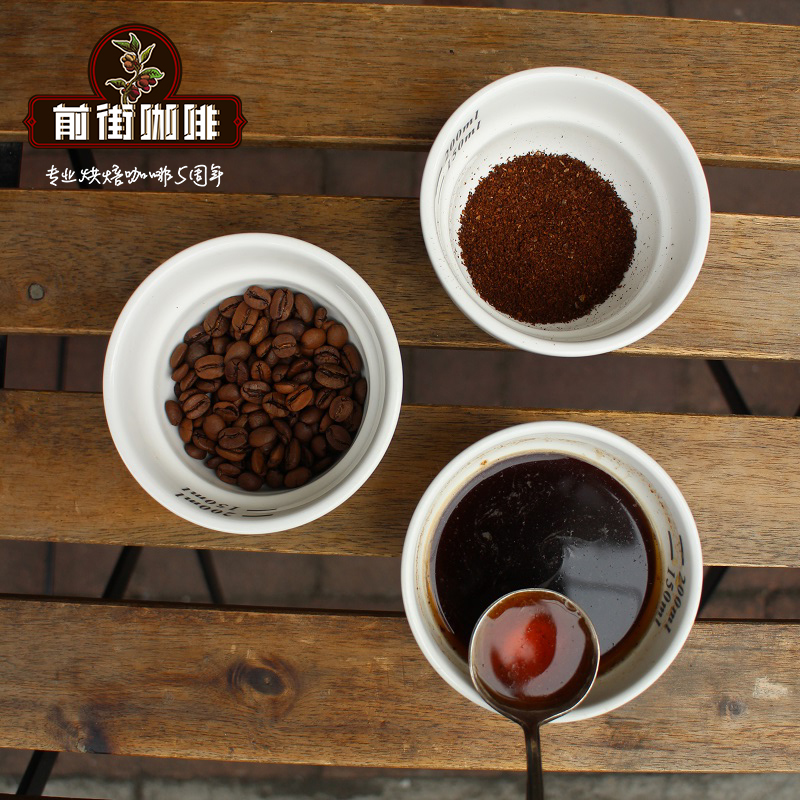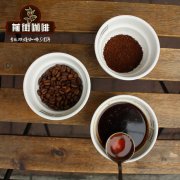How is coffee economy popular in China? The present situation of Coffee Market in China

Professional coffee knowledge exchange more coffee bean information please follow the coffee workshop (Wechat official account cafe_style)
In China, coffee has become a necessity for petty bourgeoisie life and become a popular and fashionable drink.
Data show that from 2011 to 2015, Starbucks opened more than 1300 new stores in China. At present, Starbucks has opened more than 3000 stores in more than 130 cities in China. Coffee has become the most indispensable thing in Chinese people's daily life. Recently, however, Starbucks is very upset and life is not easy. We can use this reason to talk about how the coffee economy occupied China.
Is Starbucks rumored to cause cancer?
According to the Associated Press, Wall Street Journal, Reuters and other foreign media reports, on March 28, a judge in Los Angeles, California, ruled that 90 coffee companies, including Starbucks, should put labels on coffee products sold locally to warn of the risk of cancer. Affected by the incident, Starbucks shares fell sharply, falling 1.01 percent.
It is reported that the cause of the case is that a non-profit organization in the United States has been suing companies involved in the sale of coffee products for eight years, involving 90 companies, including Starbucks, Kraft Foods and other companies. The group said the companies violated California regulations by not warning consumers that their coffee products contained acrylamide, a chemical that could cause cancer, which can be produced during roasting of coffee beans.
As soon as the news came out, everyone was surprised, but while many people were in a panic, some friends said they rushed to buy a Starbucks. In fact, from the news reports, this kind of carcinogenesis is a natural product of coffee roasting, as long as it is roasted coffee will contain more or less, so here we do not comment too much on whether Starbucks is really carcinogenic. While watching the news, we suddenly looked back and found that Starbucks had unwittingly occupied the streets of China. Today, let's talk about how the coffee economy occupied China.
Second, from foreign adults to mass consumer goods as early as two hundred years ago, in 1836, the first coffee shop in Chinese history appeared in Guangzhou, the only port open to the outside world at that time. As a subsidiary commodity of foreign missionaries and businessmen, the coffee shop at that time was not recognized by most Chinese people. After the outbreak of the Opium War in 1840, five-port trade allowed foreign goods to enter China unscrupulously, and a rapidly rising Chinese comprador of the rich at that time became the first group of people in China to drink coffee. However, the coffee at this time was all high-end goods imported from foreign countries. In 1884, the British introduced coffee successfully in Taiwan for the first time, and the French planted the first coffee tree of Chinese mainland in Yunnan in 1892. From then on, two major coffee producing areas in China were born.
However, at that time, Chinese coffee was strictly restricted to the rich, and most ordinary people could not afford the high cost of drinking coffee, so the coffee at that time was a real "foreign adult". Time was pushed back to 1984, and after the reform and opening up, China's economy began to recover rapidly, so a product called American McCoffee entered the Chinese market (later renamed Maxwell). Because McCoffee does not need grinding and roasting, it is directly soaked in water and then dissolves, thus grasping the real demand of white-collar workers after China's reform and opening up. In 1988, another coffee giant, Nestl é, also set up its own coffee company in Dongguan, Guangdong. Nestl é, contrary to the practice of McDonnell's high-end market positioning, positioned coffee directly as an ordinary population, but it was an ordinary population with upgraded consumption, so it quickly grabbed the market with its classic little red cup. At that time, the Nestl é Red Cup became a status symbol as good as the Starbucks Cup.
However, with the continuous improvement of the income level of the Chinese people, Nestle's instant coffee, although it is simple and convenient to drink, is still a bit monotonous, so cafes began to appear in the land of China. Shangdao Coffee began to enter the mainland in 1997. This coffee brand from Taiwan has expanded rapidly in the mainland by virtue of the advantage of coffee culture, reaching 3000 stores at its peak. At that time, due to the high-end decoration of coffee shops, private private rooms, and moderately priced business packages, it was unique in the 1990s, when the business culture was not strong, and became an important place for almost all business people to discuss and cooperation. since then, coffee has been closely integrated with business in China and continues to this day.
However, the joining mode and separate ways of Taiwan coffee made Shangdao Coffee get up early in the morning and catch up with an evening collection, which was replaced by European and American coffee that later entered the Chinese market. Starbucks entered China in 1998. In terms of time, it is actually not much later than Shangdao, but Starbucks' exclusive business style makes it do not compete to go to the island in the initial stage. However, due to its own business model guarantee and service quality guarantee, Starbucks has gradually gained an advantage in the competition, standardized services and stores, coffee culture makes consumers gradually identify with European and American coffee brands, not only Starbucks, Costa, Pacific have occupied a place in the Chinese market. By the end of 2017, Starbucks alone accounted for 51% of China's chain coffee market, reaching as many as 3124.
Third, how does the coffee economy sweep China?
When we talk about the history of coffee, we will find that coffee has always been accompanied by China's economic development. in the era when China's state-owned economy was the main body, the main product of the Chinese beverage market was tea. Tea culture seems to have some natural adaptability with the state-owned economic system. However, with the rapid rise of private economy and foreign economy, tea needs to be made for a long time. The need to boil hot water makes it no longer adapt to the rhythm improvement brought about by the rapid economic development, and coffee has achieved a successful filling at this time, which is also the fundamental reason for the rapid success of instant coffee in China.
After that, the success of coffee mainly focused on the following aspects: first, the scene revolution brought about by economic change. Whether it is Taiwanese coffee, European and American coffee or the recent rise of Korean coffee, they all deeply grasp one of the characteristics of the Chinese people, that is, China actually lacks a place to sit down and chat in private. There are many shops and shopping places in China, but there are very few places where you can really sit down and have something to drink and talk about. The coffee shop has hit this painful point deeply. As a result, the impression of cafes = business meetings and chat places for friends has gradually formed in the minds of Chinese people, especially the spacious space and warm environment of Korean coffee, which is more competitive than European and American coffee such as Starbucks. They better explain what is the "third space" theory.
The second is the superposition of scenes brought about by coffee culture. With the development of economy, especially the development of long-tail economy, coffee is gradually combining with other long-tail economies, especially with two-dimensional and other subcultural systems. in many places, such as maid cafes, cat cafes and book cafes have sprung up like bamboo shoots after a spring rain. Coffee has added a lot of cultural value in addition to its traditional functions of chatting and business. Thus forming another successful model of coffee economy.
Third, the office building of unmanned economy is embedded. Since 2015, unmanned coffee machines and even intelligent coffee machines have become popular in many office buildings in China. In the mode of cabinets, many white-collar workers only need to wait a minute to get a cup of fresh and cheap freshly ground coffee. And intelligent coffee machines can customize the taste of coffee according to customers' preferences, and achieve boring management through the Internet of things. Therefore, as a new tuyere of unmanned economy, intelligent coffee machine is also favored by capital and market quickly.
Fourth, the further deepening of the takeout economy. Starbucks launched the takeout business as early as 2012, but with the increasing popularity of Meituan, ele.me, Dianping and other ordering platforms in recent years, take-out coffee has gradually become another form of coffee, which is well versed in the Internet economy. Coffee has become a rapidly popular popular drink.
Important Notice :
前街咖啡 FrontStreet Coffee has moved to new addredd:
FrontStreet Coffee Address: 315,Donghua East Road,GuangZhou
Tel:020 38364473
- Prev

Four misunderstandings of coffee shop entrepreneurship what should be paid attention to in opening a coffee shop
Professional coffee knowledge exchange more coffee bean information Please pay attention to the coffee workshop (Wechat official account cafe_style) Cafe operation is extremely energy-consuming, one of the reasons is that its unique imported culture is not easy to grasp. How to profoundly interpret this imported culture more in line with the needs of the Chinese people is not easy to do, to imitate and copy other coffee.
- Next

Coffee Bean Baker: the Flavor Guardian of the connecting Link
Professional coffee knowledge exchange more coffee bean information Please follow the coffee workshop (Wechat official account cafe_style) the concept of the third wave put forward by the American bean baker: coffee is becoming more and more focused on roasting and is gradually moving towards a line of refinement, high quality and distinctive features. Coffee farmers, importers, bean bakers, baristas and consumers all play important roles in the coffee chain. Among them, with
Related
- What brand of black coffee is the most authentic and delicious? what are the characteristics of the flavor of the authentic Rose Summer Black Coffee?
- Introduction to the principle and characteristics of the correct use of mocha pot A detailed course of mocha pot brewing coffee is described in five steps.
- Which is better, decaf or regular coffee? how is decaf made?
- How much is a bag of four cat coffee?
- How about four Cat Coffee or Nestle Coffee? why is it a cheap scam?
- Which is better, Yunnan four Cats Coffee or Nestle Coffee? How about cat coffee? is it a fake scam? why is it so cheap?
- How about Cat Coffee? what grade is a hoax? which instant coffee tastes better, four Cat Coffee, Nestle Coffee or G7 coffee?
- Process flow chart of coffee making-Starbucks coffee making process what coffee tastes good at Starbucks
- The top ten best coffee beans in the world Rose summer coffee or Tanzanian coffee tastes good
- Yunnan four cat coffee is good to drink?_four cat coffee is a big brand? four cat blue mountain coffee is fake?

